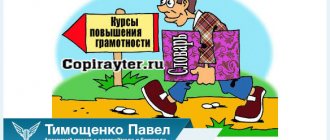Morality is morality in its historical form. The principle of morality is the desire for its highest forms, which remain basic and unchanging values over time. Morality is always addressed to a free person, who is able to perceive the law not as external coercion, but as an internal need of a person. Philosophy views ethical teachings as the foundation for a system of views on society. It was from these foundations that fundamental research and schools of sociology and philosophy began.
The Science of Morality
There is a science about the forms of morality and ethics, which is called ethics. The subject of her study is morality in its historical forms. The system of categories of ethics limits the subject area of this sphere of knowledge.
As a science, a special discipline, ethics goes back to the ancient Greek thinker Aristotle.
His works on ethics became a fundamental system of knowledge and defined the subject of this science. Ethics is the science of morality. Based on the term “ethos”, which means habitual habitat, and later acquired the meaning of “habit”, “character”, “custom”, the ancient Greek thinker identified that special section of human reality that constitutes the subject area of science.
By analogy, Cicero, with a direct reference to Aristotle, formed the word “moral”, and from it the noun “morality”, which became the equivalent of the term “ethics”. Thus, the basic concepts and categories of ethics were formed. They became basic in the development of this area of humanitarian knowledge.
Permissiveness
Moral principles and permissiveness are radically opposite things. In ancient times, morality was not simply different from what exists today.
It would be more correct to say that it did not exist at all. Its complete absence sooner or later leads society to death. Only thanks to the gradually developing moral values was human society able to pass through the immoral ancient era.
Permissiveness develops into chaos, which destroys civilization. The rules of morality must always be in a person. This allows us not to turn into wild animals, but to remain intelligent creatures.
In the modern world, a vulgarly simplified perception of the world has become widespread. People are thrown to extremes. The result of such changes is the spread of radically opposite sentiments among people and in society.
For example, wealth - poverty, anarchy - dictatorship, overeating - hunger strike, etc.
Categories of ethics
This is how the prerequisites for a system of scientific knowledge about the principles of morality and the basic concepts of morality and ethics arose. The categories of ethics are not limited to these two terms. It is possible to say that there is a scientific field of knowledge only if there is a subject and a system of categories that limits the scope of scientific knowledge from related fields of science. Ethics as a science has its own subject and research tools - a system of categories. Main categories of ethics:
- Morality and ethics.
- Good and evil.
- Good.
- Justice.
- Equality.
- Dignity.
- Duty.
- Meaning of life.
- Love.
The system of ethics categories limits the scope of scientific research from adjacent areas of the humanitarian cycle. The ethical teachings of leading thinkers in the history of human thought and modernity are the basis for the formation of approaches in philosophical schools and directions. It was thanks to the ethical views of philosophers that famous teachings were formed.
What's wrong with studying ethics
Typically, ethics courses are structured like this: students either read classic works on ethics or listen to a retelling of various theories. If you're lucky, the teacher will also talk about moral dilemmas and offer solutions to them.
Ethics classes are the most bloodthirsty, because in them you will decide whether to kill one person to save five on which a trolley is rushing at high speed, and also whether to participate in the organ donor lottery, under the terms of which you may be deprived life at any moment, if it turns out that your organs will save not one, but ten. Thinking about all these questions is certainly interesting, and you can look at many things from an unexpected angle. But how often do we make these kinds of decisions in everyday life?
Contemporary American philosopher Michael J. Sigrist suggests that the study of ethics has such little impact on the actual actions of people because the classroom usually discusses extreme or too far-fetched situations.
“Complex ethical issues discussed in textbooks usually relate to isolated, rare, or extraordinary situations. Very few of us would seriously consider selling organs, and virtually none of us would be faced with the choice of killing or torturing someone. Even decisions about childbearing and abortion are made only a few times in a lifetime, if at all. This means that ethicists working on these issues spend most of their time thinking about decisions they are unlikely to ever have to make.”
Michael J. Sigrist. Why Aren't Ethicists More Ethical?
Of course, the point of all these thought experiments is precisely to clearly show the difference between theories and to test the strength of one’s own beliefs - for this, the situation is taken to the extreme. But if we pay attention only to such out-of-the-ordinary cases, then we will get used to thinking about morality as something completely unrelated to real life.
Another American philosopher, Kwame Anthony Appiah, writes about the need to talk more about “morality of everyday life” in his book “Experiments in Ethics.” Although he acknowledges that it is important for philosophers and scientists to be able to isolate the essential, and the study of extreme cases greatly contributes to this, he warns moral philosophers against doing only this. When studying morality, it is useful to turn from time to time to everyday life and test your principles.
After all, it is impossible to be “moral in general”: one can only talk about morality in relation to specific situations. Yes, various philosophical theories help us see possible solutions - but each of us has to think every day about how to act virtuously. And there are no ready-made schemes here.
It sounds scary, but scientists have begun to study this too. This is how a new discipline appeared at the intersection of philosophy, psychology and neurobiology - moral psychology, which studies our specific moral decisions and actions.
Morals and ethics
Morality is a historical form of morality. Moral commandments are timeless categories. These are known as the principles of moral life. The Christian commandments “thou shalt not kill,” “thou shalt not commit adultery,” “thou shalt not steal,” “do not be angry,” “be envious” are nothing more than forms of moral behavior imprinted in religion.
The well-known saying “Oh times, oh morals!” - This is evidence of the variability of historical forms of morality. This is why a problem arises in the relationship between generations of “fathers and sons”, a conflict between different forms of moral behavior.
For example, during the Soviet period, any form of speculation - making a profit through the resale of goods - was considered absolutely immoral. People were subject to criminal prosecution for engaging in activities that are currently legitimized by the Law “On Entrepreneurship.”
For the Middle Ages, the highest degree of immorality was an attempt at natural scientific knowledge of the nature of things. History has preserved the sad picture of the Middle Ages as a symbol of “obscurantism.” Any form of renunciation of blind faith was persecuted and strictly prohibited.
Morality is a form of behavior adopted by a society during a certain historical period and recognized as the norm for this community. In case of refusal to accept norms, the individual is subject to alienation and censure by society in various forms.
Thus, what appears as evil in certain time conditions can turn into good in another time paradigm. Evil and good are the main moral categories of ethics.
How to write a term paper on speech therapy
07.09.2010 244937
These guidelines are compiled to help students gain an understanding of the content and structure of coursework in speech therapy.
Logopedia of pedagogical science that studies anomalies of speech development with normal hearing, explores the manifestations, nature and mechanisms of speech disorders, develops the scientific basis for overcoming and preventing them means of special training and education.
The subject of speech therapy as a science is speech disorders and the process of training and education of persons with speech disorders.
The object of study is a person suffering from a speech disorder.
The main task of speech therapy as a science is the study, prevention and elimination of various types of speech disorders.
Coursework in speech therapy is a student's scientific and experimental research. This type of educational activity, provided for by the educational and professional program and curriculum, contributes to the acquisition of skills in working with literature, analyzing and summarizing literary sources in order to determine the range of insufficiently studied problems, determining the content and methods of experimental research, processing skills and qualitative analysis of the results obtained. The need to complete coursework in speech therapy is due to the updating of knowledge concerning the content, organization, principles, methods and techniques of speech therapy work.
As a rule, during their studies, students must write two term papers - theoretical and practical.
The first course work should be devoted to the analysis and synthesis of general and specialized literature on the chosen topic. Based on this analysis, it is necessary to justify and develop a method of ascertaining (diagnostic) experiment.
In the second course work, it is necessary to provide an analysis of the results obtained during the ascertaining experiment, as well as determine the directions and content of speech therapy work, and select adequate methods and techniques of correction.
So, let’s present the general requirements for the content and design of coursework in speech therapy.
The initial and most important stage of working on a course project is the choice of a topic, which is either proposed by the supervisor or chosen by the student independently from a list of topics that are consistent with the areas of scientific research of the department.
Each topic can be modified, considered in different aspects, but taking into account a theoretical and practical approach. Having chosen a topic, the student needs to think through in detail its specific content, areas of work, practical material, etc., which should be reflected both in the formulation of the topic and in the further construction of the study. It should be recalled that the chosen topic may not only have a purely theoretical orientation, for example: “Dysarthria. Characteristics of the defect”, “Classification of dysgraphia”, but also take into account the practical significance of the problem under consideration, for example: “Speech therapy work on speech correction for dysarthria”. It should also be taken into account that when formulating a topic, excessive detail should be avoided, for example: “Formation of prosodic components of speech in preschoolers of the sixth year of life attending a preschool institution for children with severe speech impairments.”
The course work includes such mandatory parts as: introduction, three chapters, conclusion, bibliography and appendix.
The text of the term paper begins with the title page . An example of its design can be seen here.
Then the content of the work is given, in which the names of chapters, paragraphs, and sections are formulated in strict accordance with the content of the thesis. An example of its design can be seen here.
In the text, each subsequent chapter and paragraph begins on a new page. At the end of each chapter, the materials are summarized and conclusions are formulated.
The introduction reveals the relevance of the problem under consideration in general and the topic being studied in particular; the problem, subject, object, and purpose of the study are defined. In accordance with the goal and hypothesis, objectives and a set of research methods aimed at achieving the objectives must be defined.
The relevance of the topic lies in reflecting the current level of pedagogical science and practice, meeting the requirements of novelty and usefulness.
When defining the research problem, it is important to indicate what practical tasks it will help to implement in training and educating people with speech pathology.
The object of research is understood as certain aspects of pedagogical reality, perceived through a system of theoretical and practical knowledge. The ultimate goal of any research is to improve this object.
The subject of research is some part, property, element of an object, i.e. the subject of research always indicates a specific aspect of the object that is to be studied and about which the researcher wants to gain new knowledge. An object is a part of an object.
You can give an example of the formulation of the object, subject and problem of research:
– The object of the study is the speech activity of preschool children with phonetic-phonemic speech disorders.
– The subject of the study is the features of intonation speech of children with phonetic-phonemic speech disorders.
– The research problem is to determine effective directions for speech therapy work on the formation of intonation expressiveness of speech in the system of correctional intervention.
The purpose of the study contributes to the specification of the object being studied. The goal of any research is to solve a specific problem. The goal is specified in tasks taking into account the subject of research.
The research objectives are formulated in a certain sequence, which determines the logic of the research. The research objectives are set on the basis of a theoretical analysis of the problem and an assessment of the state of its solution in practice.
The first chapter is an analysis of literary sources, which examines the state of this problem in historical and modern aspects, and presents the most important theoretical principles that formed the basis of the study.
When writing the first chapter, you should pay attention to the fact that the text of the course work must be written in a scientific style. When presenting scientific material, it is necessary to comply with the following requirements:
– Specificity – a review of only those sources that are necessary to disclose only a given topic or solve only a given problem;
– Clarity – which is characterized by semantic coherence and integrity of individual parts of the text;
– Logicality – which provides for a certain structure of presentation of the material;
– Reasoning – evidence of thoughts (why this and not otherwise);
– Precision of wording, excluding ambiguous interpretation of the authors’ statements.
A literary review of the state of the problem being studied should not be reduced to a consistent presentation of literary sources. It should present a generalized description of the literature: highlight the main directions (currents, concepts, points of view), analyze in detail and evaluate the most fundamental works of representatives of these directions.
When writing a work, the student must correctly use literary materials, make references to the authors and sources from which the results of scientific research are borrowed. Failure to provide required references will reduce your coursework grade.
As a rule, in coursework on speech therapy, references to literary sources are formatted as follows: the number of the cited source in the general list of references is placed in square brackets. For example: General speech underdevelopment is a speech pathology in which there is a persistent lag in the formation of all components of the language system: phonetics, vocabulary and grammar [17].
When using quotations, in square brackets, in addition to indicating the source number, the page number from which this excerpt is taken is indicated, for example: Speech rhythm is based on a physiological and intellectual basis, since, firstly, it is directly related to the rhythm of breathing. Secondly, being an element that performs a communicative function, “correlates with meaning, i.e. controlled intellectually” [23, P.40].
However, course work should not be of a purely abstract nature, so you should not abuse the unreasonable abundance of citations. Quoting should be logically justified, convincing and used only when really necessary.
In the second chapter , devoted to experimental research, the organization should be described and the program of the ascertaining experiment should be presented. The survey methodology, as a rule, consists of a description of several series of tasks, with detailed instructions, visual and lexical material, the procedure for completing tasks by experiment participants, and scoring criteria. This chapter also provides a qualitative and quantitative analysis of the results obtained.
When analyzing the results of an experiment, it is necessary to use a scoring system. Examples of various criteria for quantitative and qualitative assessment are presented in the following works:
– Glukhov V.P. Formation of coherent speech in preschool children with general speech underdevelopment. - M.: Arkti, 2002. - 144 p.
– Fotekova T.A. Test methodology for diagnosing oral speech of primary schoolchildren. - M.: Arkti, 2000. - 56 p.
– Levchenko I.Yu. Pathopsychology: Theory and practice. - M.: Academy, 2000. - 232 p.
In order to visually present the results obtained during the experimental study, it is recommended to use tables, graphs, diagrams, etc. Histograms can be used in a variety of ways - columnar, cylindrical, planar, volumetric, etc. An example of the design of tables, figures, and histograms can be found here.
The third chapter provides a rationale for the proposed methods and techniques and reveals the content of the main stages of correctional work.
The conclusion contains a summary of the material presented and the main conclusions formulated by the author.
The bibliography must contain at least 25 sources. The list includes bibliographic information about the sources used in preparing the work. An example of its design can be seen here.
In the application you can present bulky tables or illustrations, examination protocols, observation records, products of activity (drawings, written works of children), notes from speech therapy classes, etc.
The volume of one course work must be at least 30 pages of typewritten text.
In general, coursework in speech therapy is the basis for a future thesis, in which the study of the begun problem can be continued, but from the standpoint of a different approach or a comparative analysis of the disorders being studied in different age categories of people with different types of speech disorders.
The content and format of theses in speech therapy can be found here.
Literature:
1. How to write a term paper on speech therapy: Methodological recommendations. Educational and methodological manual / Comp. Artemova E.E., Tishina L.A. / Ed. Orlova O.S. – M.: MGOPU, 2008. – 35 p.
2. Research work of students in the system of higher professional pedagogical education (specialty 031800 - Speech therapy). Methodological recommendations for completing the thesis / Compiled by. L.V. Lopatina, V.I. Lipakova, G.G. Golubeva. - St. Petersburg: Publishing house of the Russian State Pedagogical University named after. A. I. Herzen, 2002. - 140 p.
good and evil
The categories “good” and “good”, as a rule, are endowed with identical content. However, this does not correspond to their social nature.
Good is a sociological characteristic. Good is ethical. Good is such to the extent that it satisfies human needs. Goodness carries within itself a purely ethical content.
The categories of ethics, good and evil, determine the degree of morality in the behavior of people and society. Therefore, it makes sense to consider them in inextricable unity with the historical continuum. These categories can be briefly limited by the level of compliance with the ideals of society. Or inconsistencies (evil) with them. Good has a creative beginning, evil has the meaning of destruction.
The categories of professional ethics that reflect the values of guild cultures and norms are endowed with practical content.
Professional ethics
The code of ethics, established as a principle for carrying out professional activities, is associated with areas that directly affect the interests and values of specific people. First of all, these include humanitarian areas of professional activity:
- Medicine.
- Jurisprudence.
- Education.
The code of ethics of a doctor has been injunction since the times of Roman law: do no harm! The Hippocratic Oath contains a list of sacred commandments that a member of the professional community must observe.
It is difficult to talk about a more humane professional field than medicine. Because it protects the most important human right – the right to life. Medical ethics contains the principles of humane treatment of people and touches on many problems, such as medical confidentiality, attitude towards hopelessly ill people, responsibility and duty. Serving people in this area requires representatives to impeccably adhere to moral principles.
The same principle underlies the ethical codes of lawyers and teachers.
The categories of pedagogical ethics determine the norms of behavior towards students in such a way that not only words, but also deeds and actions set a role model.
Children and adolescents are especially sensitive to injustice and violation of their freedoms and rights. But they cannot yet fully defend their interests, so it is especially important to be able not to violate their faith in the justice of society.
Justice, respect for the individual, the principle of observance of morality are not just categories of pedagogical ethics, but the regulating principle of behavior of people who are involved in educating the younger generation.
Voluntary submission to the principles of corporate ethics serves as an element of the management of many organizations and enterprises. The ability to agree and comply with the principles of ethical behavior is a distinctive property of the human community.
Moral and ethical standards
Moral and ethical standards are principles of human behavior arising from morality. The system of these rules developed in society allows one to avoid conflicts and maintain socially acceptable, adequate behavior. Fulfillment of moral norms is called a moral duty, non-compliance is called moral guilt.
A moral norm determines the level of culture, education, and consciousness of an individual. It implies respect for social principles and for people. The norm assumes that a person will obey it even against his own wishes, if this is prescribed by society.
The unity of moral and ethical standards is called the “moral code.” Its components: socially important requirements, individual consent to comply with regulations, conditions for the implementation of behavior.
An example of a highly moral course of action is compliance with moral standards in extreme situations: military operations, imprisonment, incurable illness.
Immorality is the denial of morality. Modern popular culture affirms the acceptability of actions that were previously considered immoral. There is a substitution of concepts, a loss of criteria for assessing what is happening. Immorality is a consequence of selfishness and permissiveness, lack of education.
Moral standards are immutable. Work on the formation of a person’s moral code is carried out through education, spiritual development, and enlightenment.
Justice and equality
Population protests have always taken place under the slogan of equality and justice... If we recall history, all revolutions were the result of violations of these social norms.
This suggests that such categories of ethics as justice and equality are the principles of organizing a conflict-free society.
Justice requires from a person and society the observance of morality, stipulated by the social contract - law, constitution, law, morality and ethics. Therefore, it is important to understand that the categories of ethics in question are not empty words. They have a level of value that guarantees a civilized path of development of society.
Equality has always meant the right of every person to equal opportunities for self-realization in society. Achieving the principle of equality is only possible hypothetically. Since the difference in the forms of existence of people, societies, states, and social groups is so great that a long path is still required to rise to the level of equal opportunities for people in this world.
Distinctive Marks of Morality
There are various spheres of human spiritual life: science, art, literature, religion. All of them are organized activities. There are institutions that ensure the development of these manifestations of social life. But not morality. Its processes are not ensured by organizations and institutions, and, nevertheless, morality penetrates into all niches of people’s activities.
The difference between moral norms and customs and legal norms:
- Universality. The custom is of a national, historical, social nature. Public morality (not the moral principles of a social group) is universal for all humanity.
- Voluntariness. The law implies strict compliance. Moral norms are designed for the free choice of a person, subject to his reason. Compliance with custom is based on habit and fear of social disapproval. Compliance with moral principles is strengthened by a sense of duty and conscience.
- Inclusiveness. Moral standards apply in all areas of activity: in study, work, science, business, creativity, politics.
Duty, dignity, honor
These categories of ethics are directly enshrined in the constitutional norms of the most significant state document.
Debt is a person’s direct responsibility to fulfill obligations to society and people. Duty to parents and children, duty to the Motherland to fulfill military duties - we agree that every person, due to his moral upbringing, should perceive these rules of behavior not as external norms, but principles of moral behavior. However, this is not always the case, and in case of violation of these norms, sanctions are provided for the violator.
Dignity is a measure of self-esteem of one’s own importance in society and it is protected constitutionally. This is the price for contribution to social development. The right of every person to have his worth recognized is an important norm of a just society.
Honor is a very capacious term in its content. The scope of the concept is much greater than that which embraces the totality of individual qualities and capabilities of an individual person. Often it conceals belonging to the general
vitally important social institutions and communities. The honor of an officer, a uniform - in these terms lies a person’s personal responsibility for the right to belong to a certain system of universal values. Dignity, honor, duty are at the same time categories of professional ethics of those spheres of human life that are intended to protect the life, health and safety of people.
How to make friends between an elephant and a rider
To better describe what happens when we make a moral (and other) decision, the famous American moral psychologist and philosopher Jonathan Haidt proposed his metaphor to characterize the work of a dual system of thinking.
Imagine that your “fast,” emotional thinking (System 1) is the elephant, and your “slow,” rational thinking (System 2) is the rider. And although we like to think that it is the rider who controls the elephant (that is, the mind controls the emotions), in reality, if the elephant does not want to budge, there is little that the rider can do. That’s why it’s so important not to forget about your elephant.
To motivate him, coaches advise dividing a complex task into simpler ones, removing obstacles from his path and influencing emotions. Journalists, political strategists, teachers and bloggers have long understood this: facts alone are not enough to give an interesting lecture or write an exciting text - you also need to tell stories, captivate and turn to practice.
The same approach can be used in relation to morality: not only bring dry logical arguments from the works of philosophers, but also connect them with emotions and everyday life.
The idea seems simple, but in practice the balance is difficult to achieve. Often the discussion of moral issues (for example, the death penalty or abortion) goes to extremes: we either bombard the opponent with rational arguments that do not convince him, since they are not associated with emotions, or, conversely, we turn the argument and discussion into angry abuse.
As Haidt's research shows, this is due to the way our dual system of thinking works. In matters of morality, much more often (than we admit to ourselves) we first react emotionally and act accordingly, and after the fact we begin to explain why our action was right. That is, we rationalize our moral actions in the final stages: first we feel in our gut what is right, and then we look for an appropriate theory.
To become more moral or influence the moral behavior of others, it is always worth remembering the two sides of morality - rational and emotional. Ethics classes, the writings of moral philosophers, and various arguments and discussions change our moral thinking and help us theoretically understand what is right and moral. But in practice, everything will be more complicated, since emotions and “fast” thinking will come into play. This is fine.
It is not possible to give up emotions and become virtuous simply by reading philosophical books. Likewise, it is impossible to rely solely on your feelings to find the best solution for everyone. We need both.
The meaning of life and love
Concepts that contain the highest moral values of human life are significant for every person. These are guidelines for positive and meaningful activity for the benefit of both the individual and other people.
The meaning of life, following the logic of the natural process, is to prolong the race. As an ethical category, this is a reflexive process of a person’s awareness of the purpose of his existence, his mission on earth.
Is it possible to live without a goal? Naturally, as a biological being, man is predetermined in his purpose. Ethics does not examine this. Biological individuals are the subject of study in natural sciences.
Since antiquity, service to people has been proclaimed the highest virtue. This is the purpose, the moral principle of man. Understanding your life is a certain level of intellectual development of the individual. It has been noted that scientists who have completely subordinated their lives to serving humanity constitute the largest stratum of centenarians. This is explained very simply. Serving humanity so fills the life of an individual with meaning that the very form of limiting life in time is subordinate to this higher goal and extends the life of a person in this world.
Love is a great value. A well-known aphorism says that only a lover has the right to be called a man. This is a person’s moral and aesthetic tension, which cannot be compared in terms of emotionality with any of the feelings.
Conscience
This concept has an exclusively moral basis. It’s curious, but it’s difficult to find analogues in foreign languages. More often it means “self-awareness.” The origins of the term “conscience” lie in Christian teaching, according to which this quality is a gift from God, a guide to the righteous path for man.
This term is included in the concepts and categories of ethics and is inextricably linked with an understanding of the content of such moral postulates as duty, honor, and human responsibility. A harmonious personality is a person with a clear conscience when he realizes the righteousness of his life. Conscience is spiritual freedom and the right to choose based on moral duty.
Morality of modern society and morality
As mentioned earlier, morality and morality are the same in essence, but differ in the historical form of manifestation.
It is often said that modern society is immoral. This statement is valid for any historical form of human development. The ideal - a moral and harmonious society - remains the goal of development. It is unattainable by definition. Because life is always a development limited by time and space to achieve an ideal.
Violation of moral norms can lead to the self-destruction of society as a historical form. On the other hand, there is a positive trend based on the principle of self-preservation. Humanity has a strong enough rationality potential to protect itself from these extreme forms of self-destruction.
The main categories of ethics are the subject of scientific research. But their theoretical analysis serves as the basis for the formation of practical views on the moral forms of behavior of a person, society and the state.
Moral principles
Throughout human history, one moral principle has replaced another. Some were similar, some were different, but their essence remained the same.
A universal cliché on the basis of which all other moral norms are generated:
- The principle of talion (from the Latin “talis” - “same”). In other words, revenge, where the punishment must be equal to the damage caused. This principle is reflected in the Old Testament (Leviticus 24:20): “an eye for an eye, a tooth for a tooth.”
- The principle of morality. The “Golden Rule of Morality” is reflected in the religions and philosophies of the West and East. It is found in Buddha, Christ, Confucius, and is the basic principle of world ethics. In general terms it sounds like this: “What you don’t wish for yourself, don’t do to someone else.”
- The principle of the golden mean. Its description is contained in Aristotle’s book “Nicomachean Ethics”, but this term itself is not there yet. The principle teaches to avoid extremes and observe moderation with everything. Moral virtues are located in the middle between two extremes. For example, courage lies between recklessness and cowardice.
- The principle of greatest happiness. It is based on the principle of benefit, formulated in the 18th century. Achieving personal happiness should also benefit other people. The criteria of morality are, in this case, benefit, benefit, pleasure.
- The principle of justice formulated in the 20th century by an American scientist. It talks about providing equal rights and freedoms to citizens. On the equality of people economically and socially.










